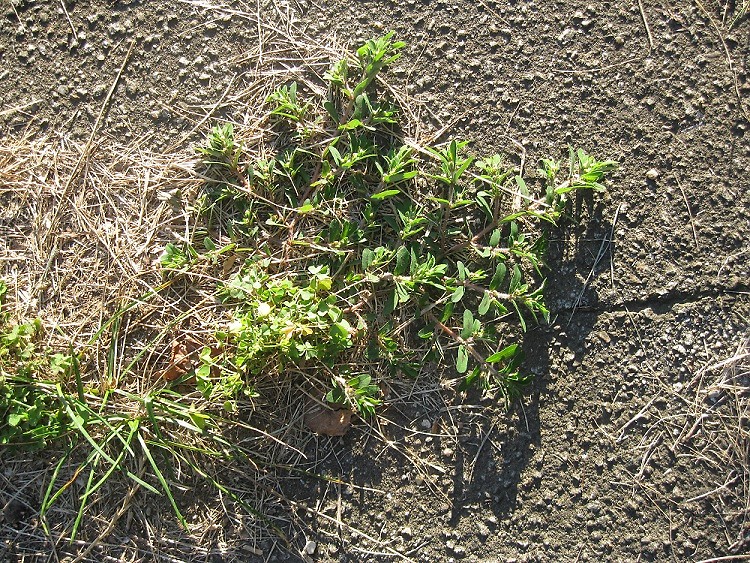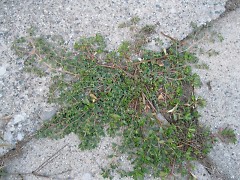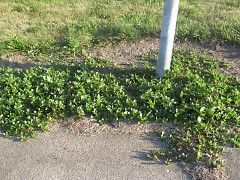Note: This is the first article in a series that I will be writing about foraging in West Michigan.
I begin describing my foraging adventures in the city of Grand Rapids and its outer limits with purslane deliberately, because purslane only grows in the hot summer months. It begins germinating when soil temperatures reach 60 degrees, but it germinates best when it's hot. So you start to see it peeking out of sidewalk cracks and taking over garden beds in late June, right about the time fireflies appear. You've probably ripped it out of your driveway or weeded it out of your flower beds and tossed it, never realizing that you were throwing away a superfood. Yes: a superfood. Purslane is one of those wonderful foods that will make you healthier if you incorporate it in your diet- up there with salmon almonds, quinoa and blueberries. Only you don't find purslane in oversized packages at Costco. You find it growing wild everywhere in June, July and August.
Here's what it looks like when it first appears, nestled in with a little clover and grass. It's a succulent, meaning that it's a water storer capable of living in hot and dry conditions, so it doesn't take long to get a bit fleshier looking. In the second picture, you can see this happening - it starts to look like moss rose, its relative, without the showy flowers (purslane flowers are small and yellow). When it starts looking like a jade plant - fat and green and shiny - that's when you pick it. Do not gather it from the street, though, as it will have absorbed traffic pollution including heavy metals. Always use caution when foraging. Remember that plants that grow near roadways will have absorbed exhaust fumes. I've picked and eaten purslane from sidewalks on lesser traveled streets.
Purslane is high in omega-3 fatty acids, more so than any other leafy vegetable. It's also a good source of Thiamin, Niacin, Vitamin B6 and Folate and a very good source of Vitamins A and C, Riboflavin, Calcium, Magnesium, Iron, Copper, Phosphorus, Potassium and Manganese. It has about seven calories per serving. That's right, only seven. If you are prone to kidney stones, you should note that it contains oxalate.
What do you do with purslane? Toss it in a salad to add a little crunch. To me it tastes kind of like a mild green pepper, a bit sour. I added it to my spaghetti a few weeks ago and for a moment I thought I'd added peppers. Like kale or spinach, adding it to soups retains all the nutrition of purslane while not changing the taste much. Also an option: casseroles, stews or anything that could use a little green. It can also be pickled or fermented, but I haven't done either.
It won't be available for that much longer, so try it now while you can- it's healthy and free. What could be better?
The Rapidian, a program of the 501(c)3 nonprofit Community Media Center, relies on the community’s support to help cover the cost of training reporters and publishing content.
We need your help.
If each of our readers and content creators who values this community platform help support its creation and maintenance, The Rapidian can continue to educate and facilitate a conversation around issues for years to come.
Please support The Rapidian and make a contribution today.


